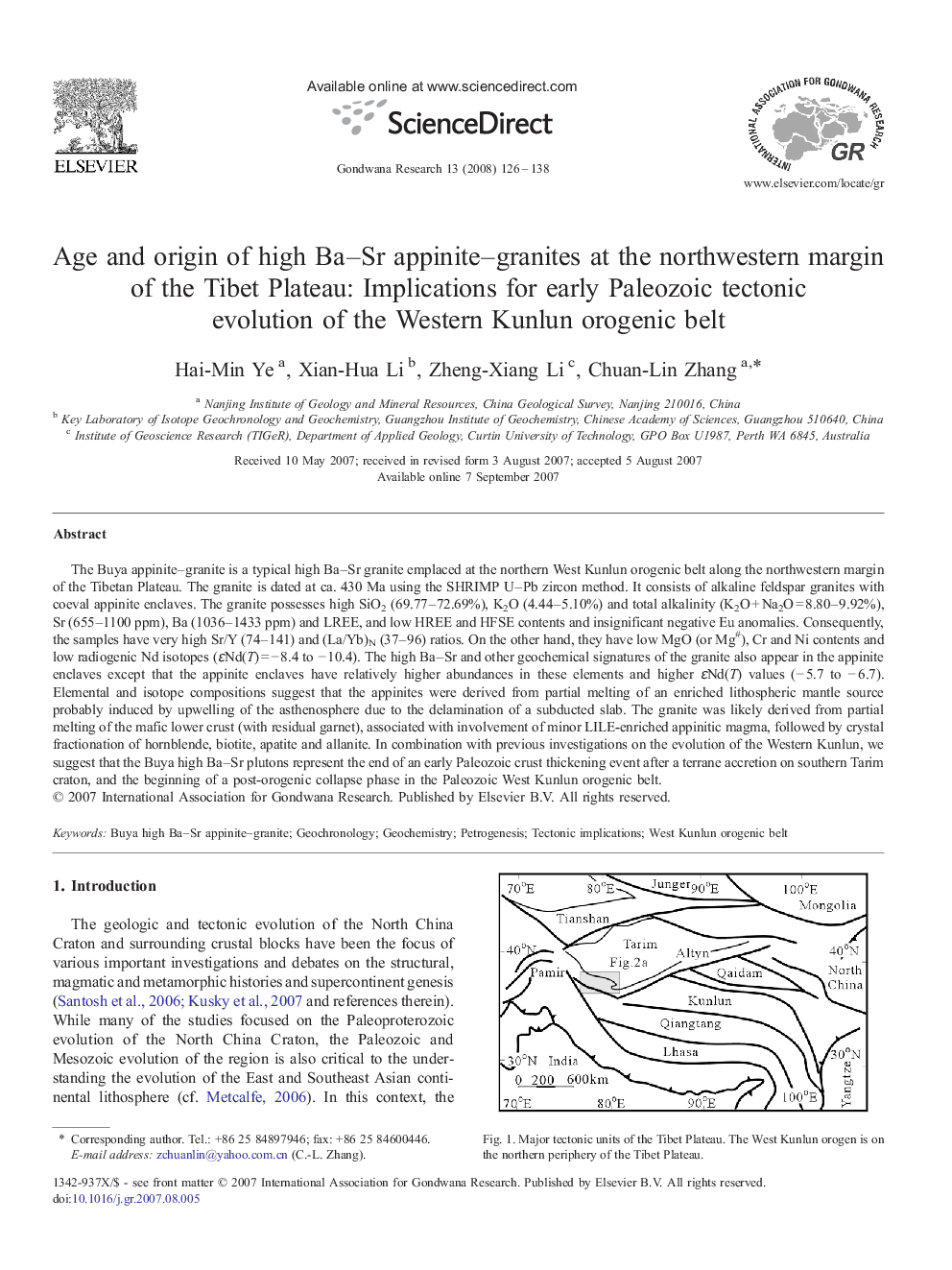| کد مقاله | کد نشریه | سال انتشار | مقاله انگلیسی | نسخه تمام متن |
|---|---|---|---|---|
| 4727633 | 1356386 | 2008 | 13 صفحه PDF | دانلود رایگان |
عنوان انگلیسی مقاله ISI
Age and origin of high Ba-Sr appinite-granites at the northwestern margin of the Tibet Plateau: Implications for early Paleozoic tectonic evolution of the Western Kunlun orogenic belt
دانلود مقاله + سفارش ترجمه
دانلود مقاله ISI انگلیسی
رایگان برای ایرانیان
کلمات کلیدی
موضوعات مرتبط
مهندسی و علوم پایه
علوم زمین و سیارات
زمین شناسی
پیش نمایش صفحه اول مقاله

چکیده انگلیسی
The Buya appinite-granite is a typical high Ba-Sr granite emplaced at the northern West Kunlun orogenic belt along the northwestern margin of the Tibetan Plateau. The granite is dated at ca. 430 Ma using the SHRIMP U-Pb zircon method. It consists of alkaline feldspar granites with coeval appinite enclaves. The granite possesses high SiO2 (69.77-72.69%), K2O (4.44-5.10%) and total alkalinity (K2O + Na2O = 8.80-9.92%), Sr (655-1100 ppm), Ba (1036-1433 ppm) and LREE, and low HREE and HFSE contents and insignificant negative Eu anomalies. Consequently, the samples have very high Sr/Y (74-141) and (La/Yb)N (37-96) ratios. On the other hand, they have low MgO (or Mg#), Cr and Ni contents and low radiogenic Nd isotopes (ÉNd(T) = â 8.4 to â 10.4). The high Ba-Sr and other geochemical signatures of the granite also appear in the appinite enclaves except that the appinite enclaves have relatively higher abundances in these elements and higher ÉNd(T) values (â 5.7 to â 6.7). Elemental and isotope compositions suggest that the appinites were derived from partial melting of an enriched lithospheric mantle source probably induced by upwelling of the asthenosphere due to the delamination of a subducted slab. The granite was likely derived from partial melting of the mafic lower crust (with residual garnet), associated with involvement of minor LILE-enriched appinitic magma, followed by crystal fractionation of hornblende, biotite, apatite and allanite. In combination with previous investigations on the evolution of the Western Kunlun, we suggest that the Buya high Ba-Sr plutons represent the end of an early Paleozoic crust thickening event after a terrane accretion on southern Tarim craton, and the beginning of a post-orogenic collapse phase in the Paleozoic West Kunlun orogenic belt.
ناشر
Database: Elsevier - ScienceDirect (ساینس دایرکت)
Journal: Gondwana Research - Volume 13, Issue 1, January 2008, Pages 126-138
Journal: Gondwana Research - Volume 13, Issue 1, January 2008, Pages 126-138
نویسندگان
Hai-Min Ye, Xian-Hua Li, Zheng-Xiang Li, Chuan-Lin Zhang,